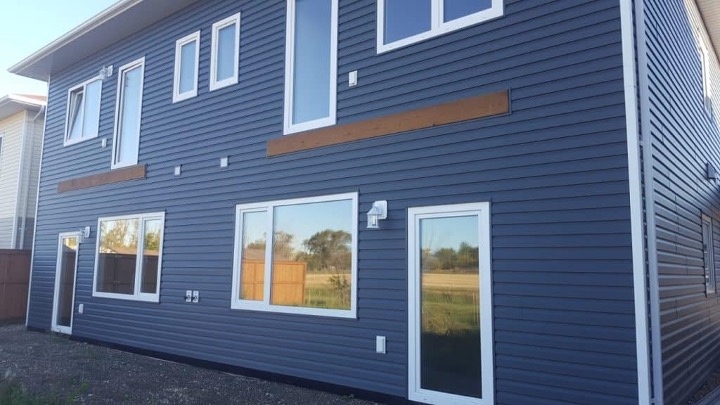A Heating Load Rule of Thumb That Worked

Sizing a heating or cooling system should start with an assessment of the heating or cooling load. Nowadays, we know the physics behind heat transfer, so we can come up with fairly accurate predictions of how much heating and cooling a building will need even before it’s built. Things were different back in the 1800s. They didn’t have air conditioning (not as we know it today anyway), and the engineering of heating systems wasn’t as well developed.
Of course, just because we can calculate the loads accurately doesn’t mean it happens all that often. A heck of a lot of homes get their HVAC systems sized by rules of thumb. Often it’s just a ton of heating or cooling capacity for some amount of floor area in the house. A common one for air conditioning here in the southeastern US is one ton of capacity for each 500 square feet of conditioned floor area.
The Mills Rule
Yesterday, I opened my weekly newsletter from HeatingHelp.com and learned about a rule of thumb method for calculating heating loads that actually worked pretty well. It’s called the Mills Rule, and it makes a lot more sense than the modern 500 square feet per ton rule. The Mills Rule was nicknamed the 2-20-200 rule because of the calculation involved, and Dan Holohan does an excellent job of telling the story in his Dead Men Tales podcast. (I highly recommend getting on their mailing list or subscribe to the podcast if you’re interested in HVAC, past and present.)
- Divide the total glazing (window) area by 2
- Divide the total cold surface (floor, wall, ceiling) area by 20
- Divide the total volume of air in the building by 200

Add those three numbers together, and that gives you the Equivalent Direct Radiation (EDR) in square feet. For typical heating conditions in those 19th century buildings, each square foot of EDR provided 240 BTUs of heat to the building.
Note that it’s not a true load calculation because it doesn’t use actual heat transfer equations. It really is just a rule of thumb. But it worked well enough for those old buildings because Mills figured out the factors (2, 20, and 200) that led to a good approximation of the heating load. Actually, I should say it led to a good approximation of the capacity of steam heat they needed in those buildings.
Why are modern rules of thumb so bad?
I don’t do anything with steam heat, but this story is interesting in contrast to the common rule of thumb based on floor area only. Mills factored in the all of the building enclosure area, and that’s where the heat loss and heat gain happen. He also differentiated between what Manual J calls “opaque panels” and glazing because the R-values of those components were different. And then he accounted for infiltration.

Contrast that with 500 square feet per ton. The only surface area used is the conditioned floor area. For cooling loads, that’s the least of your worries. A house gains a lot more heat through the walls and ceilings. And some of the conditioned floor area in a multi-story house will have no cooling load. Nor does the floor area tell you anything at all about infiltration.
The modern rule of thumb doesn’t do anything with the windows either, and they can have a huge effect on the cooling load. That house in the photo above, for example, would have a significantly higher load if the side with the windows is facing west compared to it facing north.
We have computers and software and good load calculation protocols like Manual J now, so I’m not advocating for better rules of thumb. Am I?
Allison Bailes of Atlanta, Georgia, is a speaker, writer, building science consultant, and founder of Energy Vanguard. He is also the author of the Energy Vanguard Blog and is writing a book. You can follow him on Twitter at @EnergyVanguard.
Related Articles
Got Manual J? Don’t Assume It’s Correct
How to Read Manual J Load Calculation Reports
Why Won’t the HVAC Industry Do Things Right?
NOTE: Comments are moderated. Your comment will not appear below until approved.
This Post Has 7 Comments
Comments are closed.

Is there any value to a rule of thumb for a Pretty Good House in seeing if the load calcs are in line? For example, say you got a load calc showing an expectation of one ton for each 750 sq ft. Should that raise an alarm? I would think so. OTOH, a value of 1 ton per 1000 sq ft. might be “ok”.
Of course in my PGH, I did not rely on such. Instead I ran my own BEopt calcs and compared those results to the HVAC Manual J and the calcs run by my energy evaluator. The fact that they were in line with each other with minor variations gave me confidence in the result. Oh, and the 1 ton per 1000 “validated” these, too. 🙂
Norman, yes, rules of thumb like that are OK just to get a sense of whether the loads are reasonable or not but shouldn’t be used for sizing or HVAC design.
Allison, I agree with you that floor area is a bad metric for use in an equipment sizing rule. However, when we do HERS and other energy performance ratings, we are comparing the actual design to a “standard” design with the same floor area. Does that make sense?
The same is true when the power company or my Sense energy monitor makes comparisons to other homes: it is always to sq ft and maybe the decade of construction
Roy, it’s been a while since I’ve thought about how HERS models the reference home, but there’s more to it than just floor area. It also has the same orientation, 18% window-to-floor area with windows equally distributed in the four cardinal directions… So it’s not anything like a rule of thumb.
Allison, it looks more sophisticated than a rule of thumb, but it doesn’t necessarily point you in the right direction. HERS scores don’t give you any credit for building a smaller house that has the same useable floor area (e.g., less hallways and other dead spaces). They also don’t give you any credit for building a house with less exterior surface area for a given floor area (e.g., two-story square houses vs. one-story long narrow houses). Thus, a lower HERS doesn’t necessarily mean lower energy use for the same basic function.
Oh, you’re talking about how realistic it is. No, a HERS rating doesn’t track well with that either.